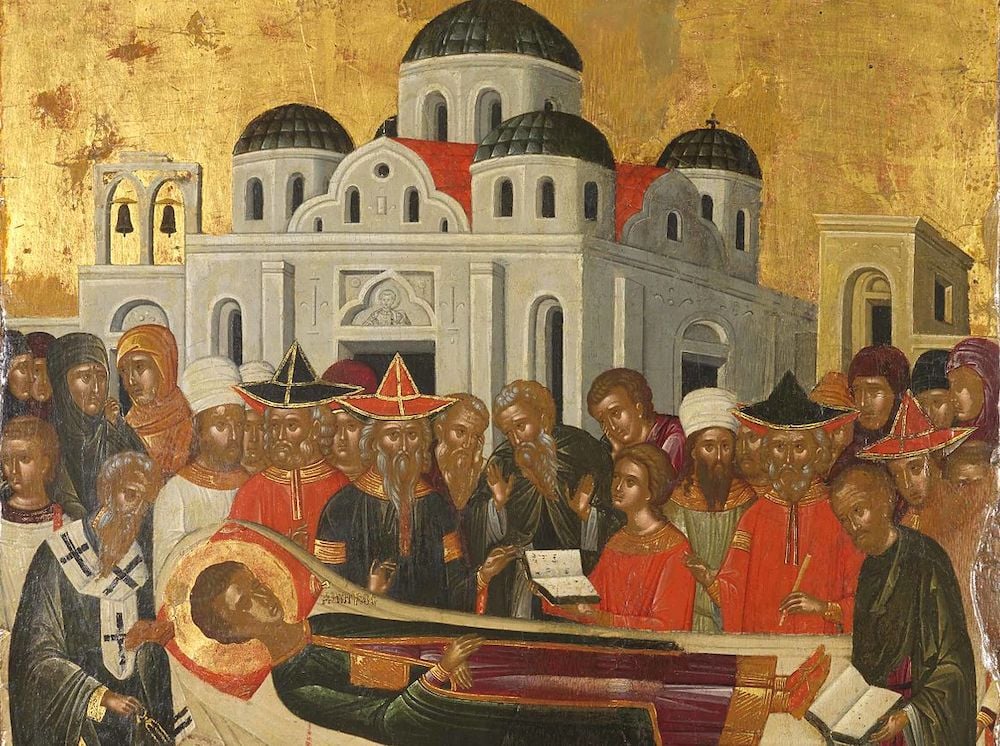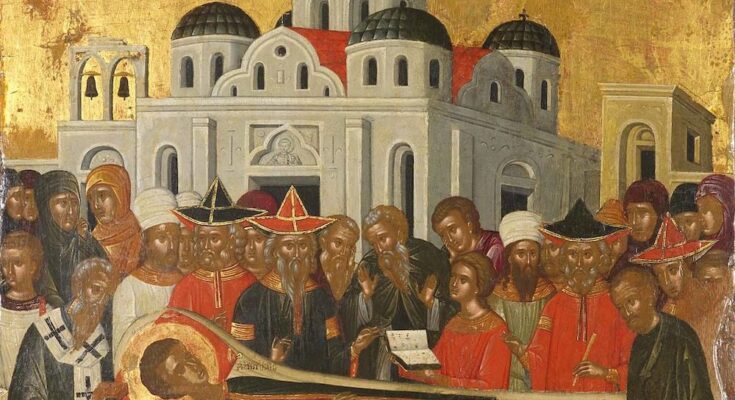
Saint Demetrios (or Dimitrios) of Thessaloniki is one of the most popular Christian saints not only in Greece but across the Orthodox Christian world, with millions of people bearing his name, in all of its many beautiful variations.
Saint Demetrios is also the well-known patron saint of Thessaloniki, Greece’s second-largest city, and millions of Greeks hold a special place in their hearts for this important Christian martyr for this reason.
His feast day of October 26 also coincides with Thessaloniki’s most important day in its modern history: The city’s liberation from the Ottoman Turks in 1912.
Understandably, Thessalonians all over the world consider this day one of the most important of the entire year, since they celebrate not only the feast day of their patron saint but also the day their beloved city was free once again, after nearly five centuries of Ottoman rule.
The life of Saint Demetrios of Thessaloniki
St. Demetrios was born in 280 AD in Thessaloniki, a city which was already an important urban center of the Roman Empire.
There is still scientific disagreement about how and when Demetrios died, spurring the creation of many theories, and it is also unknown exactly how his veneration subsequently expanded across the Roman Empire.
The earliest written evidence for his life dates back only as far as the 7th century, several hundred years after Demetrios lived.
The “Miracula Sancti Demetrii,” the earliest written evidence about the martyr’s life, is a collection of stories illustrating the miracles attested to his intervention.
The work serves as evidence that people across large parts of the Roman Empire had honored the saint from the very early stages of Christianity, since many recountings of his miracles had already been known to believers across the Empire.
However, St. Demetrios of Thessaloniki is also known as ”St. Demetrios of Sirmium” in the western Christian World.
This raises another theory, which is now believed to be the most credible by many scholars.
The theory suggests that Demetrios’ veneration surprisingly originated not in Thessaloniki but in Sirmium, a Roman city in modern-day Serbia, a few hundred miles north of Thessaloniki.
This theory suggests that at a later stage, approximately during the 4th or 5th century, the saint’s veneration began to expand to his own birthplace, the city of Thessaloniki.
It was then that the church of Saint Demetrios, a massive Christian shrine, was built at the very site where the modern church of Saint Demetrios now stands in Thessaloniki.
Whatever the truth about where he had traveled or how his popularity grew during the early stages of Christianity, Demetrios has been one of the most popular Christian saints in the Eastern Christian world for many centuries.
He was a martyr for his faith
According to tradition, St. Demetrios died at a very young age, most likely when he was only 26.
The most probable course of events suggests that his open and unashamed manner of showing his Christian faith led people to report him to Galerius, the Roman Emperor.
This faith, as a son of a pious Christian family, was ultimately what led young Demetrios to a martyr’s death.
When Galerius discovered that Demetrios was praying in public places and was openly showing his love for Jesus Christ to others, he ordered that the young man be arrested and locked up in the city prison.
Demetrios spent the last days of his life there with his beloved friend Nestor, whose feast day is on October 27, just one day after St. Demetrios is remembered. Both Nestor and Demetrios died after Emperor Galerius ordered their execution.
The first young Thessalonian to offer his soul to Jesus was St. Nestor; St. Demetrios followed his friend as a martyr just a few days later.
His death, however, would only be the beginning of a tradition that nearly 1700 years later is still alive and flourishing, with millions of people around the world continuing to celebrate and honor his memory.



